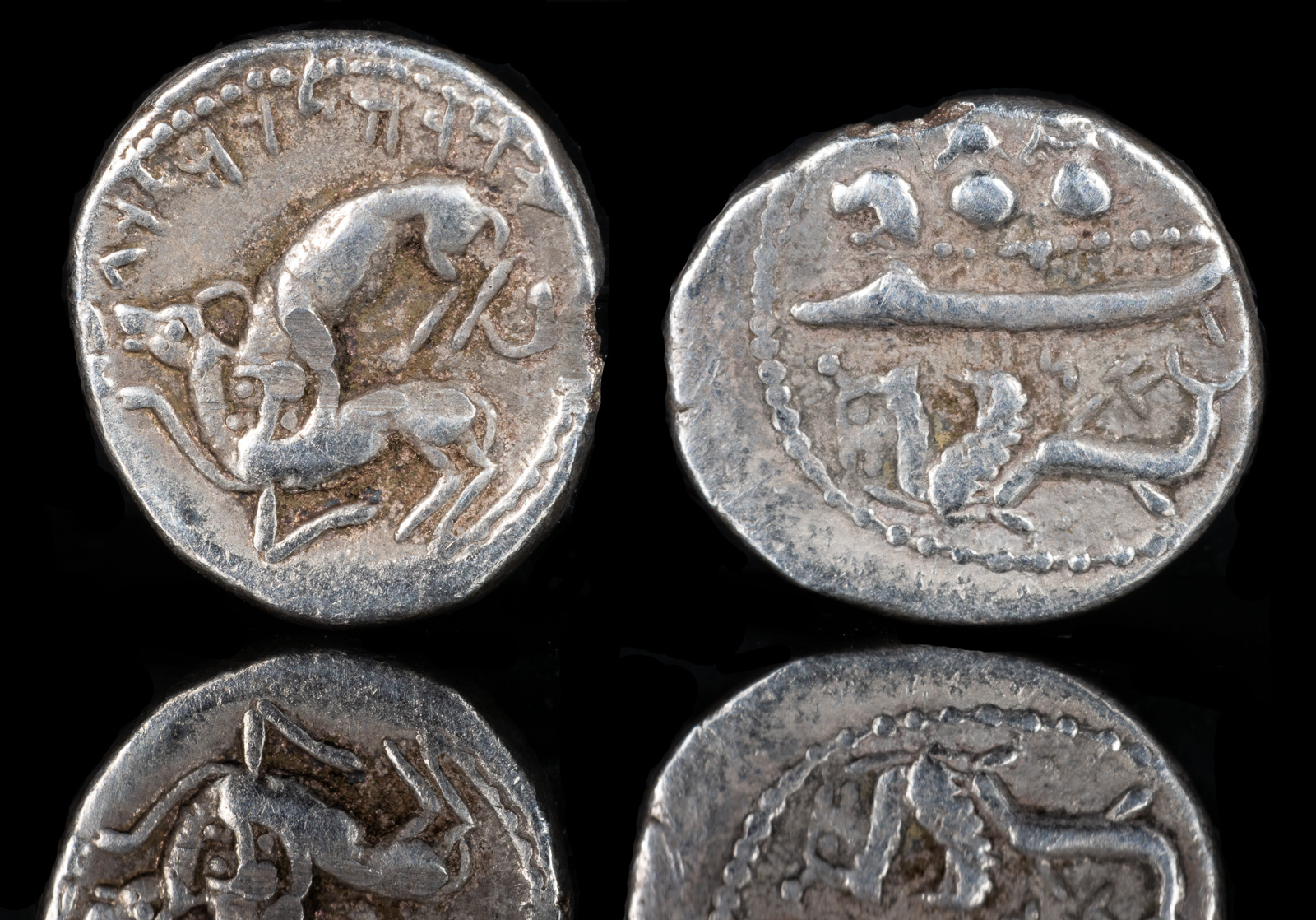
Phoenicia, Byblos ‘Urimilk III
AR 1/16 Stater 0.87g, 11mm, 9h
Circa 333 BCE
Galley to left, containing two hoplites with helmets and round shields; below, Phoenician letters and hippocamp to left / Lion attacking bull to left, Phoenician inscription above. E&E-B Group IV.3.2; HGC 10, 137
Ex Roma
I haven’t been able to find a lot of information about King Urimilk III, also called ‘Aynel, from Byblos. I do know that he was the king when Alexander the Great arrived, and he capitulated to the Macedonians without a fight.
Unfortunately, I’m not sure if he remained as king under Alexander, although he was more of a ‘mayor’ under the Persians. Given Alexander’s past tendencies, it seems logical to believe so, but very little is written about him.